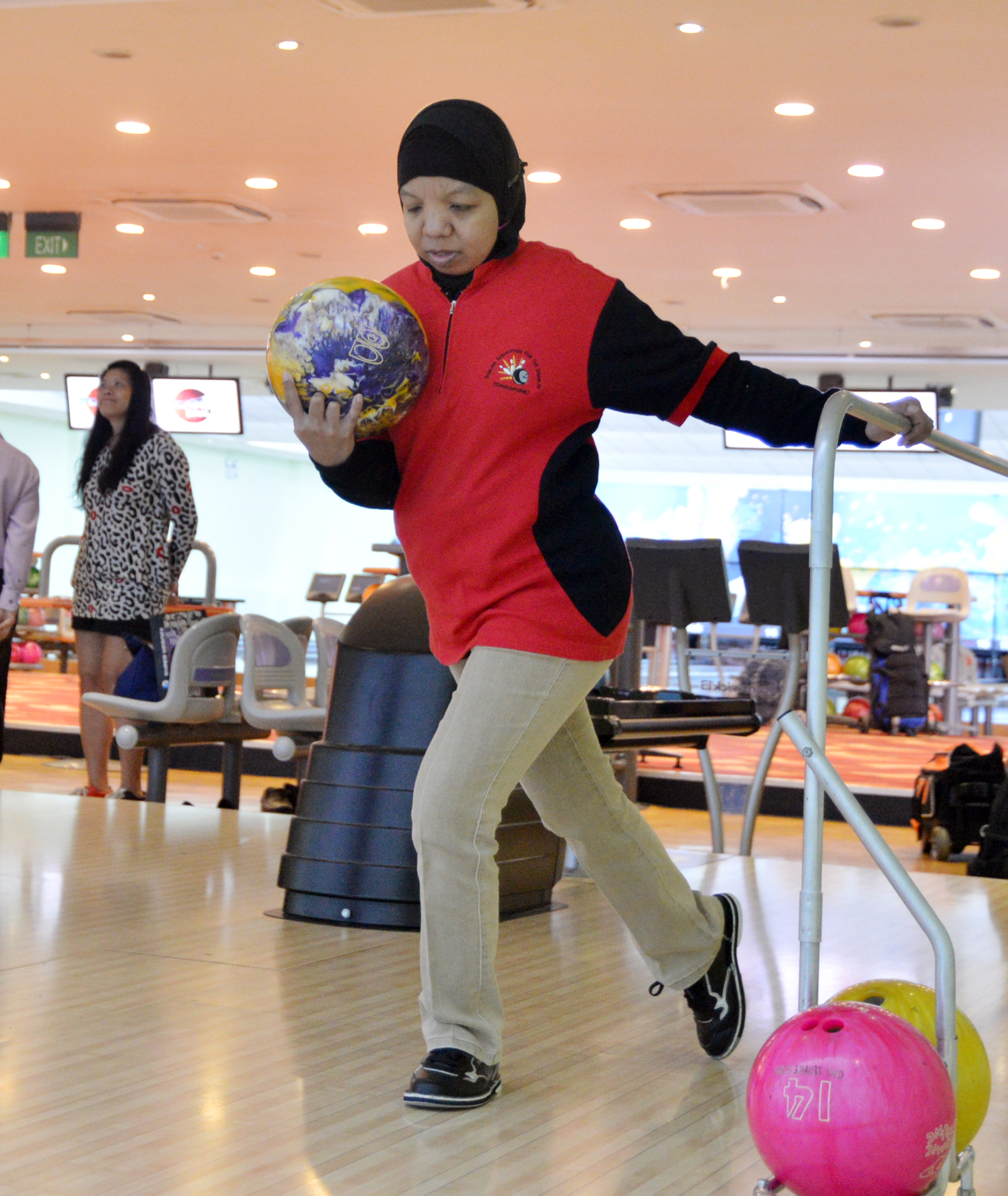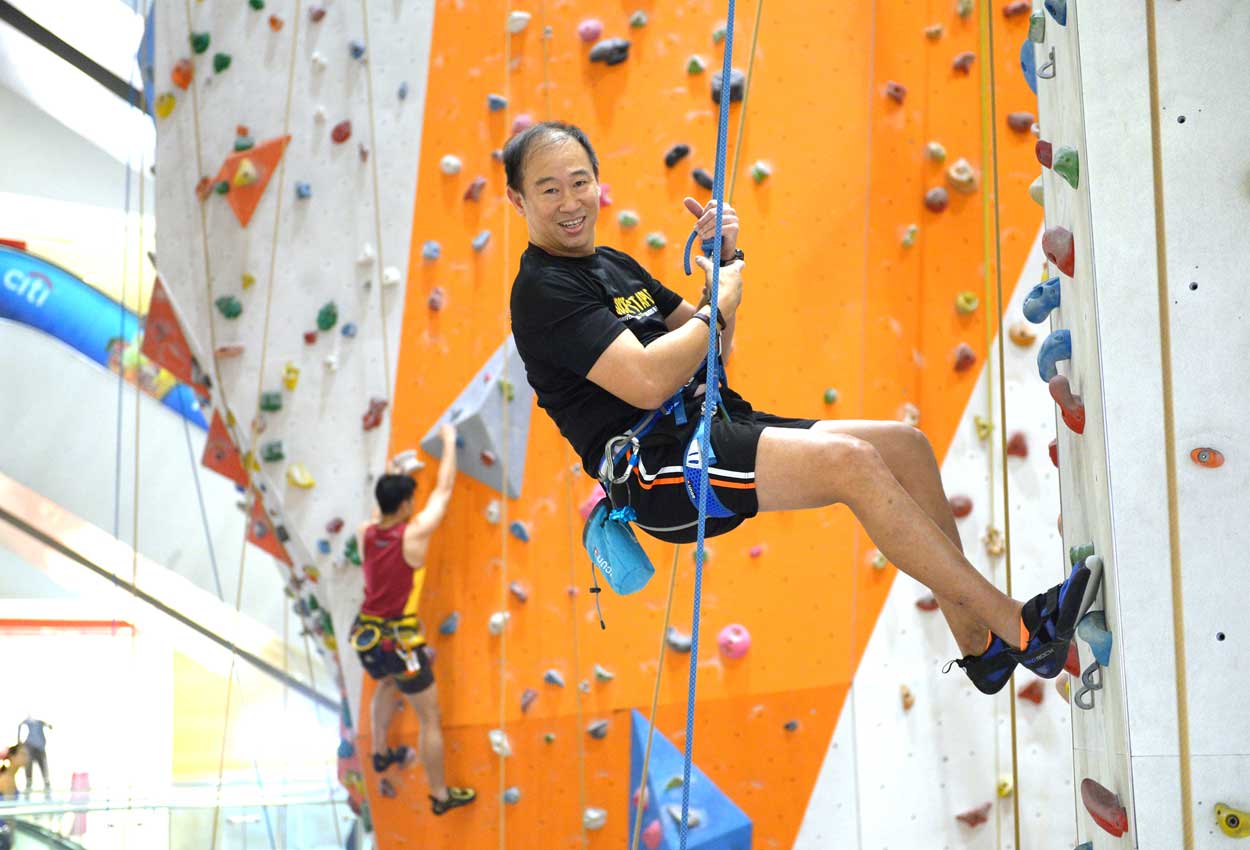The Rio Paralympics 2016, which ends today, shines a spotlight on elite athletes with disabilities, igniting a fresh wave of celebration of the determination and grace of these sportspeople.
Outside of a competitive arena, there are also many opportunities for people with disabilities to take part in sports for recreation.
The Singapore Disability Sports Council, for example, offers a range of sports suited to different disabilities. These include badminton, wheelchair racing, cerebral palsy football, equestrian sport, handcycling, sailing, swimming, shooting and goalball, where blind or partially sighted players wear eye shades for parity and score goals with a ball containing bells.
Ms Judy Wee, senior manager at Muscular Dystrophy Association Singapore, says it has seen more people taking up its sports programmes which are suitable for people with severe disabilities. These sports are powerchair football, played using motorised wheelchairs, and boccia, a ball game that can be played by wheelchair-users with motor-skill impairments.
Boccia can be played by individuals, in pairs or in teams of three. Players throw or roll coloured balls as close as possible to a white target ball or “jack”. The individual or team with the most balls near the jack wins.
Despite the range of disability sports available, not many people are aware of them, says Dr Marissa Medjeral-Mills, executive director of the Disabled People’s Association. “The Paralympics help in increasing awareness, but a lot of people don’t know that those with disabilities can be sporty. People also don’t know how to include them in sports,” she says.
In general, she says, there are ways to modify sports to make them more inclusive, such as using hand gestures instead of whistles so deaf people can participate in football matches.
Besides benefits for health and mental well-being, sports allows people with disabilities to socialise, as some of them may be isolated at home or not working, she says.
While barriers to entry still exist, such as expensive, specialised transportation to accommodate wheelchair users, stakeholders are also encouraging people with disabilities to take up sports.
The Singapore Disability Sports Council conducts monthly awareness programmes and adapted sports activities as rehabilitation for people with disabilities.
There are considerations when organising sports activities for people with disabilities. People with severe disabilities may not be able to take part in games with those who are higher-functioning physically, in case they get injured, notes Ms Wee.
But people do not necessarily have to play to participate. Even being a spectator can do wonders in making people with disabilities feel included, she adds.
RETURNING TO A TEENAGE PASTIME

After she became blind, Ms Siti Rossaliza Rosli (pictured), 36, returned to a sport she picked up in her teens: bowling.
She often bowled with her cousins when she was in secondary school because the sport was relaxing enough for her heart condition.
As a child, she was diagnosed with mitral stenosis, which is characterised by a narrowed heart valve. This made her tire easily and she was exempted from physical education in school. She underwent heart surgery in adulthood to correct the condition.
In 2010, at age 29, she received another medical blow – she was diagnosed with glaucoma, a disease that damages the optic nerve and usually affects older people.
Like many sufferers who had no early symptoms, she thought she was simply myopic until she saw a doctor when she had blurred vision. She was almost blind in her right eye by the time she was diagnosed in 2010.
She had to leave her job as a kindergarten teacher and, over the subsequent three years, she lost all of her sight, despite having surgery to try to save her left eye.
There was no family history of the disease, apart from her late grandfather, who had glaucoma in his 70s but did not go blind. Her father, 65, works in a mosque and her mother, 58, is a housewife.
She recalls feeling frustrated during the two years after her diagnosis and rarely going out.
In 2013, her uncle mentioned he had seen an advertisement of a blind athlete bowling in pitch darkness.
It sparked in her a new fascination with an old pastime.
“I didn’t know a blind person could bowl,” she says. She did some research and discovered the Bowling Association for the Disabled (Singapore), signing up for lessons to learn to bowl as a blind person.
She initially found it “very tough”, throwing a lot of gutter balls before she mastered the skill, such as using a guide rail, which is a frame set up at the edge of a lane to help blind bowlers orientate themselves.
These days, Ms Liza, who works as a call agent at a telemarketing firm, and her husband, Mr Nazarudin Abd Razak, 38, go bowling once a week. They have no children.
Mr Nazarudin, a freelance masseur who is partially sighted, is an athlete, representing Singapore in goalball at the ASEAN Para Games held here last year.
Ms Liza says bowling has enlarged their circle of friends and the activity has given her more energy. “I want to stay healthy. Bowling is one thing I know I can do.”
BEING DEAF NO HINDRANCE
Deaf since the age of three after a high fever, Mr Jimmy Chan has always led a sporty lifestyle.
The 45-year-old runs marathons, works out at the gym and goes rock- climbing.
He also trains both able-bodied and disabled people in sports such as strength training and dragon- boating at social enterprise Society Staples.
Among the challenges he took up was participating in an Operation Raleigh expedition in Siberia in his early 20s, which involved trekking and helping with scientific research.
“If I just focused on one sport, I wouldn’t be satisfied. I want to try many types of sport. Persons with disabilities can achieve in sports, the same as normal people,” he says.
The senior process designer in the oil and gas industry is married to a 37-year-old teacher. They have two daughters aged 13 and five.
As a pupil at a school for the deaf, he looked forward to physical education lessons and playing football with his friends. He also took up badminton and table tennis.
When he became deaf, he had to learn sign language based on English. His parents, who were school- bus drivers, spoke only Mandarin.
They eventually picked up basic words in English, but it was an uphill journey made easier only when his two sisters – one older, the other younger – gradually picked up simple sign language during their childhood.
Sometimes, communication with coaches can be fraught. He once left a running club because the coach refused to slow his speech so that Mr Chan could lip-read instructions.
At other times, communication challenges are not immediately apparent as his disability is not visible. For example, since his 20s, he has been rock-climbing, where safety depends on the skill of belaying, a partnered technique where another person is attached to the climber by rope.
Belaying usually depends on clear verbal communication. Because Mr Chan often cannot speak clearly, he has to work closely with his belayer, for instance, by prearranging hand signals to ensure a safe climb.
He has enrolled his daughters for rock-climbing lessons as he believes the sport tests one’s determination. He says: “I want my children to follow in my footsteps and aim to achieve in sports as well as studies.”
PLAYING TENNIS AND BASKETBALL IN A WHEELCHAIR
When Mr Palanisamy Avaday was in his late teens, a stranger stopped him in the street and asked if he wanted to take up sports.
Mr Palanisamy, 65, contracted polio at the age of seven and was using a caliper, a support for his polio-affected right leg, at the time. For longer distances, he used a wheelchair.
He replied: “What can a disabled person do?”
The stranger turned out to be the late Abdul Wahid Baba, a pioneer wheelchair-using Paralympian in Singapore who co-founded the Society for Aid to the Paralysed, now known as SPD, an organisation that serves people with disabilities.
Mr Abdul Wahid persuaded the teen to try playing wheelchair basketball with a team he had gathered.
Mr Palanisamy found the training, which included lifting weights, tiring. But he stuck with it and eventually felt motivated to take part in other disability sports such as archery and athletics.
From the late 1970s, he represented Singapore in competitions such as the Far East and South Pacific Games for the Disabled. He won several medals, including a gold for wheelchair tennis at an international tennis tournament in the 1990s.
The senior project executive at Bizlink, a non-profit organisation that offers employment assistance and training for people with disabilities, left competitive sport about 10 years ago, but feels it is important to stay healthy.
He does sit-ups and lifts dumbbells daily and watches his diet, avoiding high-cholesterol and oily food. Married to a 62-year-old telemarketer, he has two daughters who are in their 30s.
He has been trying to recruit younger people with disabilities to play basketball with the Wheelchair Basketball Association (Singapore), of which he is a committee member.
One young person told him that since he was already disabled, he did not want to be further disadvantaged by injuries from playing basketball.
“But there are rules and regulations,” Mr Palanisamy says. “It’s not dangerous, it’s a very exciting sport.”

This article was first published on September 18, 2016.
Get a copy of The Straits Times or go to straitstimes.com for more stories.









.jpg)





































